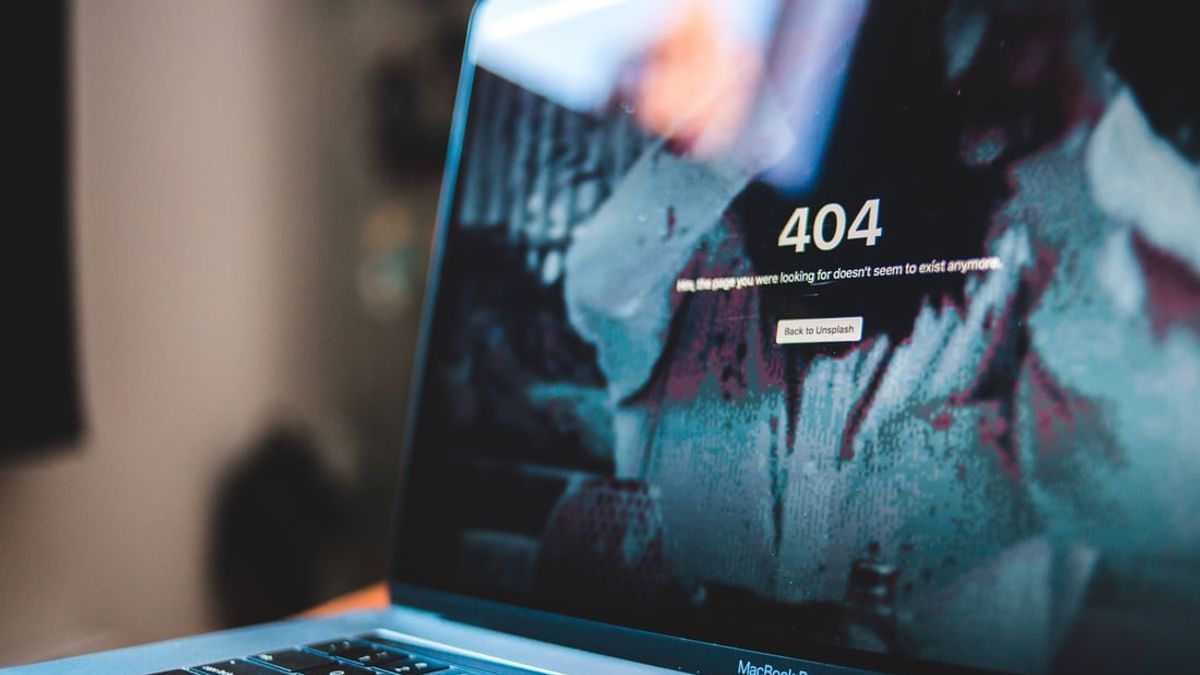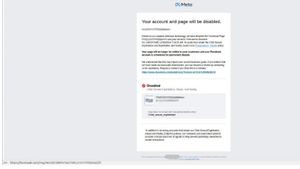JAKARTA - When you're accessing a site sometimes appears "404 Page Not Found". Then the site can no longer be accessed or another code appears like 503. However, what does all this mean?
All these codes are a Hypertext Transfer Protocol (HTTP) code. This is a system that is used to regulate the way data is sent between two devices, such as an internet server and a computer.
Before the data is sent, the server will send a number of HTTP Headers, this is the status of the web address being accessed. If the requested web page is not available, a 404 code will appear.
So for that, the following VOI describes some of the codes that often appear when you access the site, as quoted from CNET, Monday, November 8.
404
This is one of the most common error codes you will see frequently, meaning the page could not be found. Currently, some sites will design their error code pages with pictures of puppies, links to other pages, or cute illustrations to cheer you up when the site is inaccessible.
To fix this, you should double-check the URL if you mistyped it and try again. If you typed the URL correctly and you still have no luck, the page may have been moved or deleted.
503
You may see a "503 Service Unavailable" message when the website's server is down, so you won't be able to access the site until it's fixed. Possible reasons for the error include the site's server may be down due to maintenance, too many people accessing the site causing overload, the site may have bugs, or someone who wants to cause trouble has taken the site offline.
You won't be able to access the site while it's active, so the solution is to just try again in a few minutes to see if the server issue is resolved.
400
When you visit a site in Google Chrome, you will get the message, "This page is not working at this time" along with some guidance on contacting the website administrator.
Usually, this is caused by an error on your part. There may be a typo in the URL, the server may not understand your request, or the file you are trying to upload is too large. Try clearing your cache first and checking the URL for typos. If it still doesn't work, follow Google's suggestions.
410
This is a status that the site you are visiting is unavailable. You may see messages such as, "This page does not exist" or "Page deleted or missing". No problem with you, you visited the right page, but the website administrator may have deleted it for good.
451
This code blocks you from viewing the URL for various legal reasons or there has been a violation. According to Mozilla's developer resource page, individuals or organizations may have filed lawsuits to remove content or the page may have been blocked due to government censorship.
You'll see a legal explanation on the page with the status code, but it's not always visible. If you are determined to view the content, you may be able to do so with a few tactics, such as using a VPN or proxy server that acts as a tool to bypass server restrictions.
301
You may have heard of "301 redirects" but may not have seen this code displayed on the site. Think of it as a smooth transition from one old URL to a new URL, like forwarding your email. You should still see the web page you want, but it may have a different URL than the one you entered. This is quite unique, even if you use the old URL you will still be automatically redirected to the new one. Bookmark the new URL for future reference.
Watch for Site Errors Starting from Code
It's worth noting that most client errors start with code 4. You'll need to fix something before continuing. For example, a 403 code might mean the page is banned, or the web administrator is restricting access to the page. You have to go to another page or site.
Usually, if something goes wrong, you'll have to do one of these things.
Restart your computer, modem or router. Check the URL for typos. Visit a different URL.Sometimes, other actions may be required, such as you have to pay to view protected content or, if you keep clicking buttons, you just have to wait patiently because the request is not processed fast enough.
If the error starts with code 5, it's a server problem and there's probably not much you can do about it. Try contacting the website support to let them know that you are getting a server error.
The English, Chinese, Japanese, Arabic, and French versions are automatically generated by the AI. So there may still be inaccuracies in translating, please always see Indonesian as our main language. (system supported by DigitalSiber.id)













